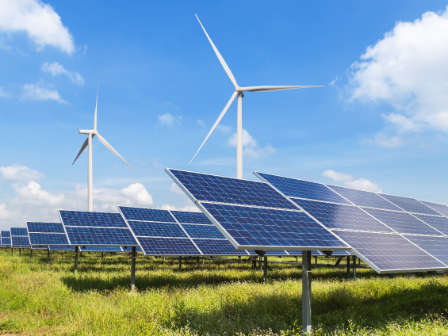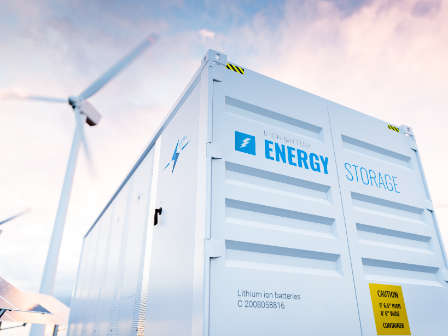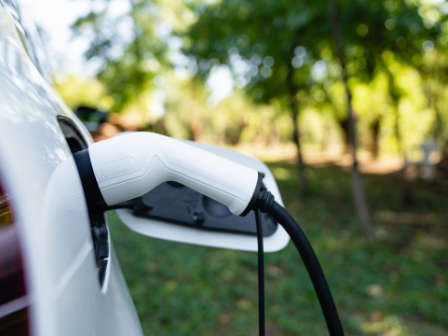
The transition to more sustainable mobility is a driving factor in the transformation of the energy system
A coordinated infrastructure expansion is essential for the success of the energy transition
ASFINAG’s vision for a decarbonized energy future
The system vision presented below is based exclusively on the abovementioned stakeholders' assessments and visions. APG merely provides the modeling system within the context of the zusammEn2040 project - APG's position can therefore not be derived from the statements.
As a reliable, innovative and sustainable mobility partner, ASFINAG is making a significant contribution to the energy and mobility transition. The mobility of the future is electric - the trend in both passenger and heavy goods traffic is moving towards battery-powered e-mobility. As the operator of Austria’s high-level road network, we aim to establish a nationwide e-charging infrastructure for cars by 2030 and for trucks by 2035. Based on our traffic forecasts, the expansion plans for public e-charging, and the ramp-up curves in the e-car and e-truck sectors, we aim to provide insights into the energy requirements and potential grid loads in the vicinity of Austria’s highway and expressway networks.
The decarbonization of the mobility sector is essential for achieving Austria's climate neutrality target. The progressive electrification of the mobility sector will lead to a significant increase in the electricity demand. The additional need for electricity during hours when demand is already high and generation is low (especially in the mornings and evenings) will be a big challenge for the electricity system. With its e-charging point concept for the high-ranking road network in Austria, ASFINAG intends to reduce the load on the electricity system by shifting charging times to the hours of sunshine.
Against this background, the following key propositions were developed, and APG’s energy system model was used to quantify and confirm them:
Results at a glance
The decarbonization of the mobility sector, which accounted for over 28% of Austria's total CO2 emissions in 2022, is a central pillar of decarbonization and is essential for achieving the ambitious climate and energy targets. The mobility transition also offers the greatest leverage for efficiency gains in the overall energy system by switching from fossil fuels to green electricity as an energy source.
The roll-out of a nationwide e-charging infrastructure is the basic prerequisite for the rapid ramp-up of e-mobility. Only a well-developed charging infrastructure can create the necessary incentives to switch to electric mobility.</p
Sector coupling creates the technical prerequisites for achieving the political energy and climate targets. The electrification of the mobility sector has a significant impact on the electricity system. To make the best possible use of the potential synergies between the electricity and mobility sectors, a coordinated approach to establishing the e-charging infrastructure is required.
Sector coupling creates the technical prerequisites for achieving the political energy and climate targets. The electrification of the mobility sector has a significant impact on the electricity system. To make the best possible use of the potential synergies between the electricity and mobility sectors, a coordinated approach to establishing the e-charging infrastructure is required.
The mobility transition requires a holistic concept. The decarbonization of the mobility sector can be achieved by combining various technologies and measures. Battery-powered vehicles in both passenger and heavy goods transport, together with H2-fuel cell-powered trucks, form the core of the vehicle fleet of the future.
Assumptions for the ASFINAG system vision
The scenarios aim at highlighting the role of the mobility sector in the energy system of the future - especially its impact on the electricity sector. It is a detailed analysis regarding road traffic and its integration into a future decarbonized energy system. The central question is: “What contribution can mobility and a coordinated expansion of the charging infrastructure make to achieve the climate and energy targets?”
To evaluate the effects of the coordinated roll-out of ASFINAG's e-charging point concept on the energy system, 2 scenarios were defined in this system vision:
Scenario A (SC A): Efficient expansion of the e-charging infrastructure as defined in ASFINAG's charging point concept
Charging will increasingly take place at service areas. Megawatt chargers will be used from 2030.
Charging profile: There will be increased intraday charging at powerful charging stations.
Hypothesis: Charging times are shifted to the hours of sunshine. This contributes to a better integration of renewables.
Scenario B (SC B): Uncoordinated expansion of the charging infrastructure
Charging primarily takes place at slow speed at home or at the workplace (private mobility), or at production sites (freight transport).
Charging profile: Charging peaks occur in the mornings and evenings at peak load times.
Hypothesis: PV production peaks cannot be used for e-charging, the generated electricity has to be stored and shifted to the night via additional flexibilities. This leads to inefficiencies in the system.
The results of the model-based analyses in the context of zusammEn2040 in detail
Based on the assumptions made by ASFINAG and the parameters entered as a result, the energy system model (ESM) calculates an "optimal" energy system on the path to 2050. The most important findings are presented below:
The mobility transition has a significant impact on the electricity sector
The energy flow diagram shows: Developments in the transportation sector have significant repercussions for the entire energy system. There will be a strong electrification of the demand sectors to achieve decarbonization. This will be accompanied by a massive expansion of renewables. The advancing electrification also leads to significant efficiency gains: The energy demand of the transportation sector decreases significantly in both scenarios. In Scenario B, the use of H2 fuel cells in freight transport is promoted more strongly in addition to e-mobility. Compared to SC A, the lower degree of electrification in SC B results in an overall higher final energy demand and an increased need for sector coupling in the transport sector.
Energy flow diagram for the entire Austrian energy system in TWh - Scenario A

The electrification of mobility facilitates decarbonization
The transport sector was responsible for over 28% of GHG emissions in Austria in 2022 - this is around 21 Mt CO2. The scenario results show that complete decarbonization of the mobility sector is possible and that the electrification of mobility is essential for decarbonization. This leads to a sharp increase in the electricity demand for the transport sector from a few TWh in the reference year to 33 TWh (SC A) or 26 TWh (SC B) in 2050. Overall, however, considerable efficiency gains lead to a significant reduction in the energy demand of the mobility sector: from around 110 TWh in the reference year to 47 TWh (SC A) or 49 TWh (SC B).
Development of the final energy demand of road traffic in AT in TWh

A nationwide e-charging infrastructure creates the basis for the ramp-up of e-mobility
To manage the rapid ramp-up of e-mobility, a coordinated roll-out of a nationwide e-charging infrastructure is required. ASFINAG is laying the foundations with its ambitious e-charging point concept. To meet different charging needs, different types of chargers will be installed by 2030 and 2035, respectively: 50-150 kW, overnight and megawatt chargers. The required charging capacity and the charging profiles of cars and trucks have a significant impact on the electricity sector in an electrified transport sector - a coordinated roll-out of the e-charging infrastructure is therefore essential for the success of the energy transition.
The majority of vehicles will be battery-powered in 2050. Diesel and petrol-powered vehicles will take a back seat. Despite an assumed increase in the overall traffic, the electrification will lead to a significant reduction in energy demand. In addition, the strong electrification of the mobility sector will almost completely eliminate fuel tourism by 2050.
Development of fuel shares in passenger and freight transport in AT
A coordinated roll-out of the e-charging infrastructure reduces the load on the electricity sector
The home and work loader profiles in the private transport sector and the production site loaders in freight transport in SC A are increasingly shifting towards charging during daytime (sunshine hours). This is being driven by providing many opportunities for high-power charging at service and rest areas. The diagram shows that increased charging during the day means that in SC A PV generation can be used more efficiently for e-mobility. In SC B, more buffer storage (primarily batteries) must be available to temporarily store the electricity that is generated. In SC B more than 10 % additional energy is stored in and withdrawn from batteries over the year, despite the significantly lower electricity demand compared to SC A.
By calculating a simultaneity indicator, the degree of overlap between two time profiles can be quantified. The results show that in SC A the e-charging profile is much better correlated with the PV generation profile in both private mobility and freight transport. The simultaneity indicator is 50% higher in private mobility and twice as high in freight transport in SC A compared to SC B. This means that SC A makes much more efficient use of the renewable energy. The comparison of the two scenarios shows that ASFINAG's e-charging point concept is necessary for the success of the mobility transition and creates additional flexibilities for the electricity sector.
Comparison of the time sequence of PV generation and electricity demand for the mobility sector (passenger and freight transport) in a sample week in GWh
.png)
Conclusion
The decarbonization of the mobility sector poses a number of challenges. These must be addressed through a coordinated and forward-looking approach. The electrification of mobility is one of the greatest levers for efficiency gains in the demand sector and, therefore, a great opportunity for the energy transition. As a sustainable mobility partner, ASFINAG is making an important contribution to the energy and mobility transition. Rolling out an ambitious e-charging point concept at service areas creates the basis for a rapid ramp-up of e-mobility and is therefore essential for achieving the ambitious climate and energy targets.
Through a smart & efficient expansion of the e-charging infrastructure on Austria’s high-level road network, the mobility sector can contribute to the security of supply and support the integration of renewables by integrating smart buffer storage options and approximating charging cycles to the generation profiles of renewables as outlined in scenario A.









